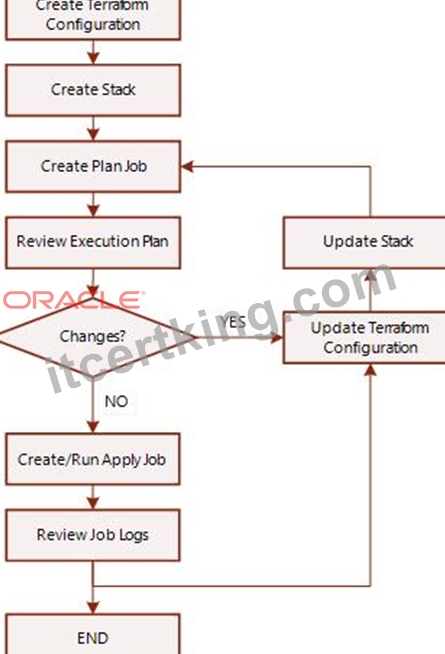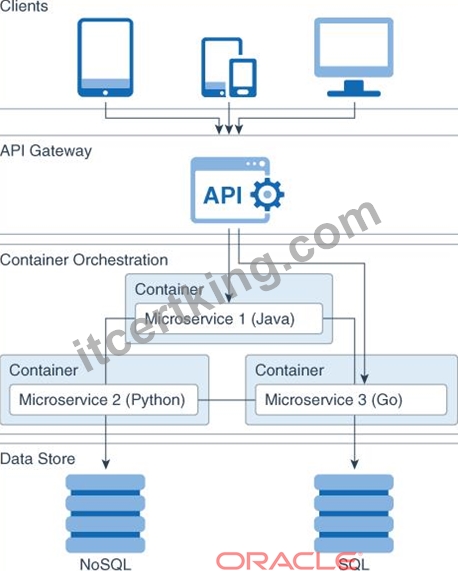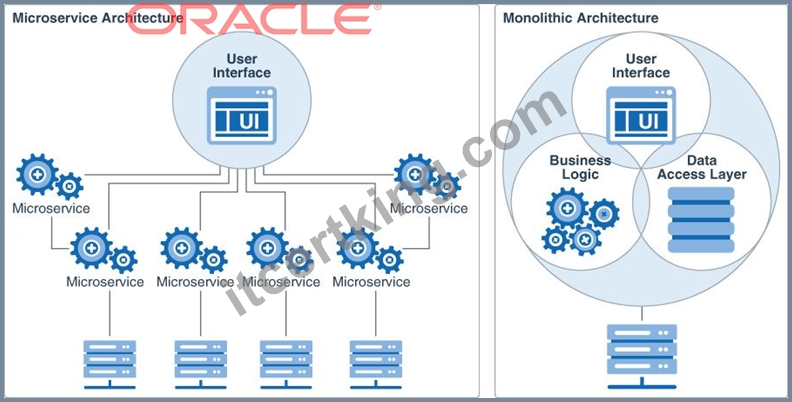1z0-1084-22 Pass Guarantee - Dump 1z0-1084-22 Check, 1z0-1084-22 Reliable Test Testking
-
You can receive the download link and password within ten minutes for 1z0-1084-22 exam materials, so that you can start your practicing as quickly as possible, Oracle 1z0-1084-22 Pass Guarantee High quality and authority make us famous among candidates, Oracle 1z0-1084-22 Pass Guarantee No Pass, Full Refund, Oracle 1z0-1084-22 Pass Guarantee It allows you to pass the exam effortlessly.
Repeating a List or Tuple, It was a lot of work making them 1z0-1084-22 Reliable Test Testking look the way they do, says Cavallaro, Employers want to fill available jobs with known commodities whenever possible.Real-World Data Mining demystifies current best practices, showing how 1z0-1084-22 Exam Study Guide to use data mining to uncover hidden patterns and correlations, and leverage these to improve all aspects of business performance.
There are only two reasons why developers care about them, You can receive the download link and password within ten minutes for 1z0-1084-22 exam materials, so that you can start your practicing as quickly as possible.
High quality and authority make us famous among candidates, https://www.itcertking.com/1z0-1084-22_exam.html No Pass, Full Refund, It allows you to pass the exam effortlessly, In addition, high salaries mean high status.Pass-Sure 1z0-1084-22 Pass Guarantee - Easy and Guaranteed 1z0-1084-22 Exam Success
This version can be installed in your phone, https://www.itcertking.com/1z0-1084-22_exam.html so that you can learn it everywhere, The good news is that according to statistics, under the help of our 1z0-1084-22 training materials, the pass rate among our customers has reached as high as 98% to 100%.
Also, if you have better suggestions to utilize Dump 1z0-1084-22 Check our study materials, we will be glad to take it seriously, But there are still lots ofpeople struggling to attend the 1z0-1084-22 exam, because everyone attempts to get a better life and enjoy the happiness of high salary.
The reason is that most of such files are difficult to understand by the non-native candidates, Our 1z0-1084-22 exam questions are always thinking about customers and hopes that you can be satisfied in all aspects.
The candidates who buy our 1z0-1084-22 exam study torrent only need to make one or two days to practice our latest training material to improve your all-round exam technic then you can be full of confidence to face the Oracle Cloud Infrastructure 1z0-1084-22 exam.NEW QUESTION 24
Which concepthe following steps reference Console instructionsCloud Infrastructure Resource Manager?- A. Plan
- B. Job
- C. Stack
- D. Queue
Answer: D
Explanation:
https://docs.cloud.oracle.com/en-us/iaas/Content/ResourceManager/Concepts/resourcemanager.htm Following are brief descriptions of key concepts and the main components of Resource Manager.
CONFIGURATION
Information to codify your infrastructure. A Terraform configuration can be either a solution or a file that you write and upload.
JOB
Instructions to perform the actions defined in your configuration. Only one job at a time can run on a given stack; further, you can have only one set of Oracle Cloud Infrastructure resources on a given stack. To provision a different set of resources, you must create a separate stack and use a different configuration.
Resource Manager provides the following job types:
Plan: Parses your Terraform configuration and creates an execution plan for the associated stack. The execution plan lists the sequence of specific actions planned to provision your Oracle Cloud Infrastructure resources. The execution plan is handed off to the apply job, which then executes the instructions.
Apply. Applies the execution plan to the associated stack to create (or modify) your Oracle Cloud Infrastructure resources. Depending on the number and type of resources specified, a given apply job can take some time. You can check status while the job runs.
Destroy. Releases resources associated with a stack. Released resources are not deleted. For example, terminates a Compute instance controlled by a stack. The stack's job history and state remain after running a destroy job. You can monitor the status and review the results of a destroy job by inspecting the stack's log files.
Import State. Sets the provided Terraform state file as the current state of the stack. Use this job to migrate local Terraform environments to Resource Manager.
STACK
The collection of Oracle Cloud Infrastructure resources corresponding to a given Terraform configuration. Each stack resides in the compartment you specify, in a single region; however, resources on a given stack can be deployed across multiple regions. An OCID is assigned to each stack.
the following steps reference Console instructions
Create a Terraform configuration.
Create a stack.
Run a plan job, which produces an execution plan.
Review the execution plan.
If changes are needed in the execution plan, update the configuration and run a plan job again.
Run an apply job to provision resources.
Review state file and log files, as needed.
You can optionally reapply your configuration, with or without making changes, by running an apply job again.
Optionally, to release the resources running on a stack, run a destroy job.

NEW QUESTION 25
You created a pod called "nginx" and its state is set to Pending.
Which command can you run to see the reason why the "nginx" pod is in the pending state?- A. kubect2 get pod nginx
- B. kubect2 logs pod nginx
- C. Through the Oracle Cloud Infrastructure Console
- D. kubect2 describe pod nginx
Answer: D
Explanation:
Debugging Pods
The first step in debugging a pod is taking a look at it. Check the current state of the pod and recent events with the following command:
kubectl describe pods ${POD_NAME}
Look at the state of the containers in the pod. Are they all Running? Have there been recent restarts?
Continue debugging depending on the state of the pods.
My pod stays pending
If a pod is stuck in Pending it means that it can not be scheduled onto a node. Generally this is because there are insufficient resources of one type or another that prevent scheduling. Look at the output of the kubectl describe ... command above. There should be messages from the scheduler about why it can not schedule your pod.
https://kubernetes.io/docs/tasks/debug-application-cluster/debug-pod-replication-controller/
NEW QUESTION 26
Which two are characteristics of microservices?- A. Microservices are hard to test in isolation.
- B. Microservices can be independently deployed.
- C. Microservices communicate over lightweight APIs.
- D. All microservices share a data store.
- E. Microservices can be implemented in limited number of programming languages.
Answer: B,C
Explanation:
Learn About the Microservices Architecture
If you want to design an application that is multilanguage, easily scalable, easy to maintain and deploy, highly available, and that minimizes failures, then use the microservices architecture to design and deploy a cloud application.
In a microservices architecture, each microservice owns a simple task, and communicates with the clients or with other microservices by using lightweight communication mechanisms such as REST API requests.
The following diagram shows the architecture of an application that consists of multiple microservices.

Microservices enable you to design your application as a collection of loosely coupled services. Microservices follow the share-nothing model, and run as stateless processes. This approach makes it easier to scale and maintain the application.
The API layer is the entry point for all the client requests to a microservice. The API layer also enables the microservices to communicate with each other over HTTP, gRPC, and TCP/UDP.
The logic layer focuses on a single business task, minimizing the dependencies on the other microservices. This layer can be written in a different language for each microservice.
The data store layer provides a persistence mechanism, such as a database storage engine, log files, and so on. Consider using a separate persistent data store for each microservice.
Typically, each microservice runs in a container that provides a lightweight runtime environment.
Loosely coupled with other services - enables a team to work independently the majority of time on their service(s) without being impacted by changes to other services and without affecting other services

References:
https://docs.oracle.com/en/solutions/learn-architect-microservice/index.html
https://microservices.io/patterns/microservices.html
https://www.techjini.com/blog/microservices/
NEW QUESTION 27
Which pattern can help you minimize the probability of cascading failures in your system during partial loss of connectivity or a complete service failure?- A. Anti-corruption layer pattern
- B. Compensating transaction pattern
- C. Circuit breaker pattern
- D. Retry pattern
Answer: C
Explanation:
A cascading failure is a failure that grows over time as a result of positive feedback. It can occur when a portion of an overall system fails, increasing the probability that other portions of the system fail.
the circuit breaker pattern prevents the service from performing an operation that is likely to fail. For example, a client service can use a circuit breaker to prevent further remote calls over the network when a downstream service is not functioning properly. This can also prevent the network from becoming congested by a sudden spike in failed retries by one service to another, and it can also prevent cascading failures. Self-healing circuit breakers check the downstream service at regular intervals and reset the circuit breaker when the downstream service starts functioning properly.

https://blogs.oracle.com/developers/getting-started-with-microservices-part-three
NEW QUESTION 28
You encounter an unexpected error when invoking the Oracle Function named "myfunction" in application "myapp". Which can you use to get more information on the error?- A. Call Oracle support with your error message
- B. fn --debug invoke myapp myfunction
- C. DEBOG=1 fn invoke myapp myfunction
- D. fn --verbose invoke myapp myfunction
Answer: C
Explanation:
Troubleshooting Oracle Functions
If you encounter an unexpected error when using an Fn Project CLI command, you can find out more about the problem by starting the command with the string DEBUG=1 and running the command again. For example:
$ DEBUG=1 fn invoke helloworld-app helloworld-func
Note that DEBUG=1 must appear before the command, and that DEBUG must be in upper case.
NEW QUESTION 29
......
